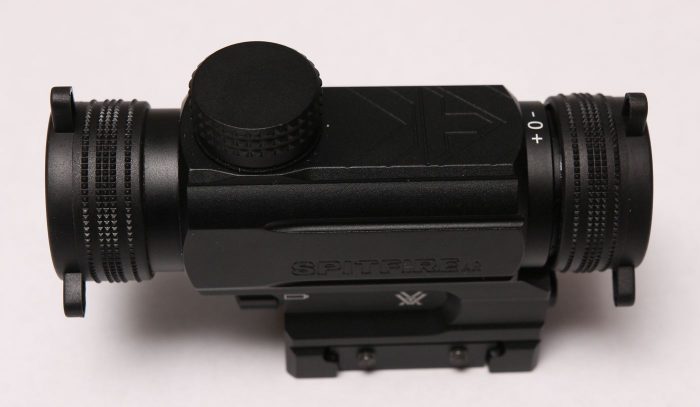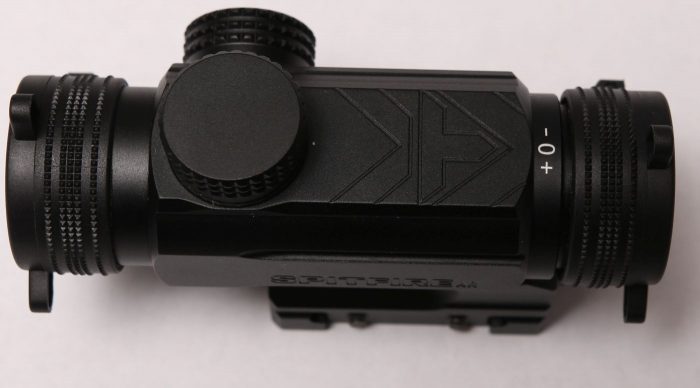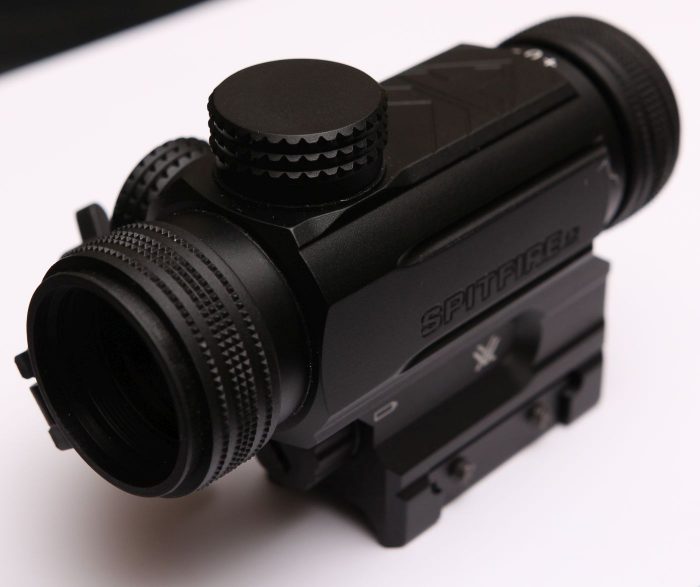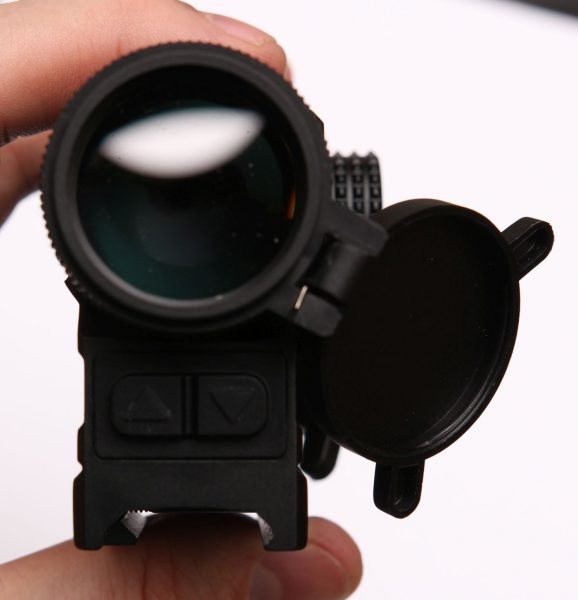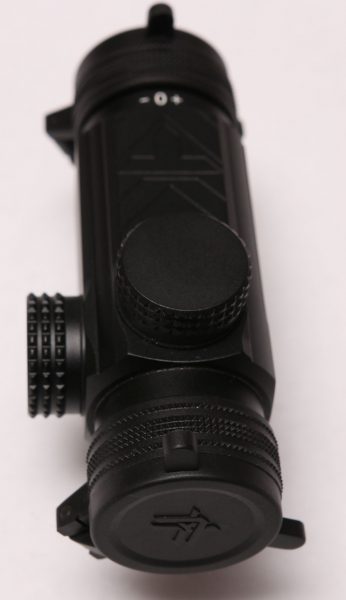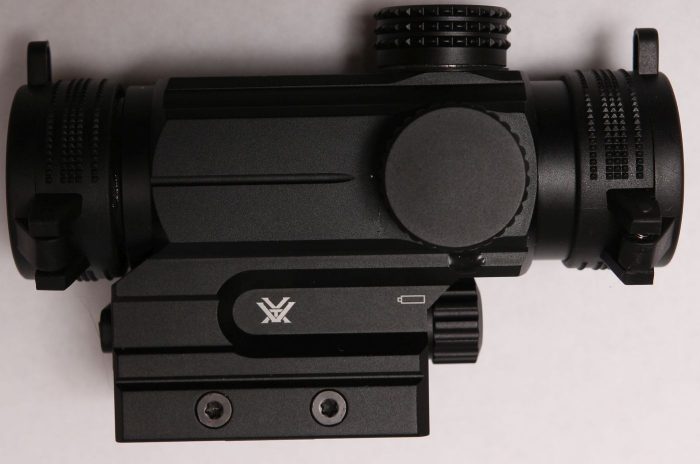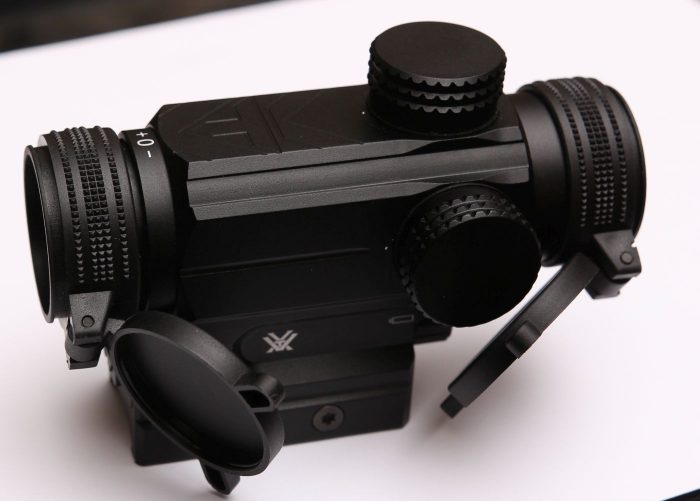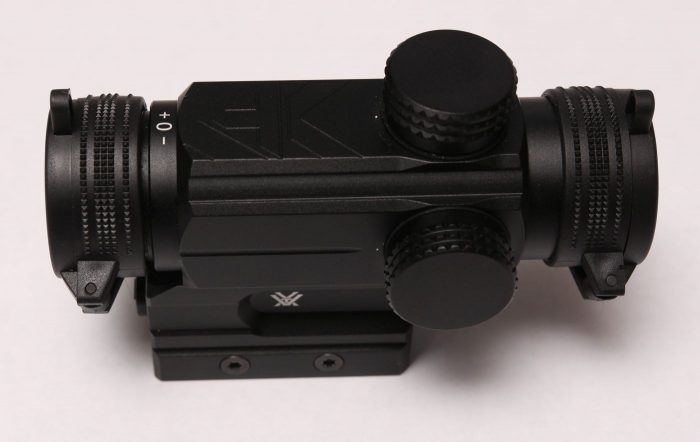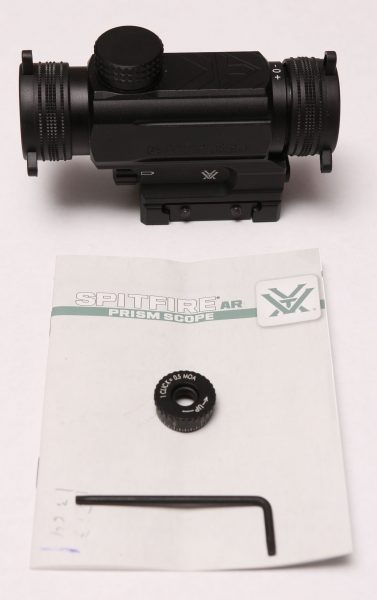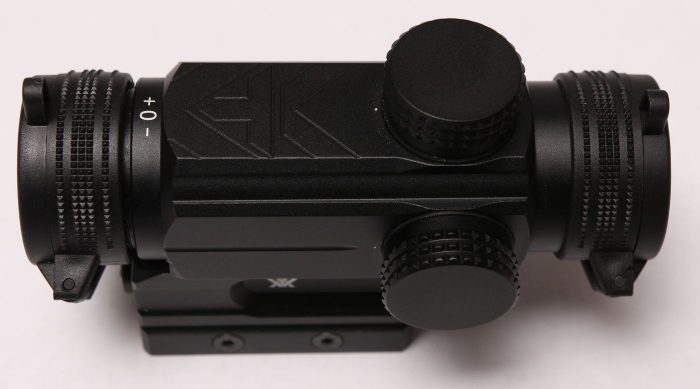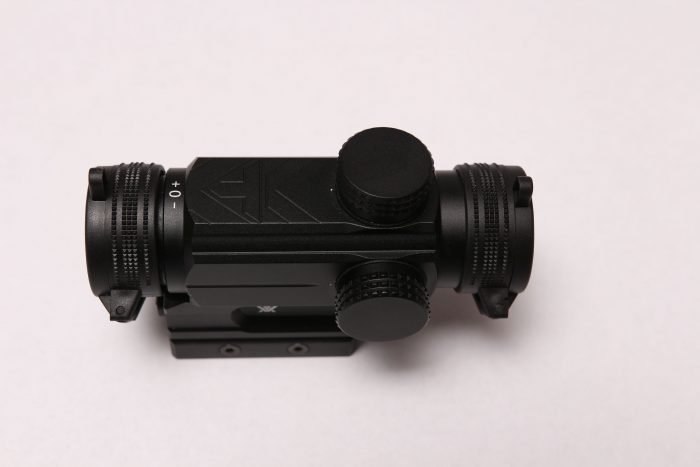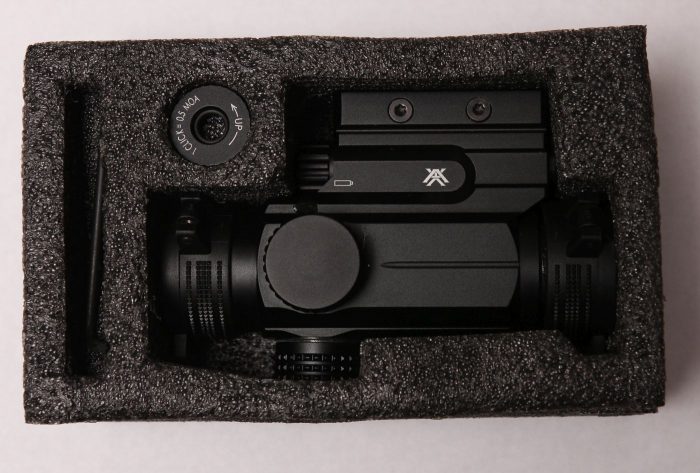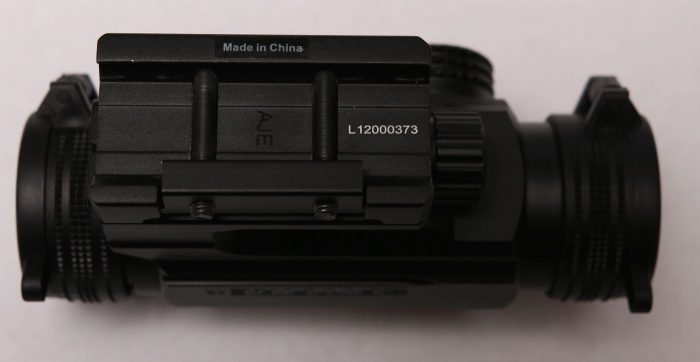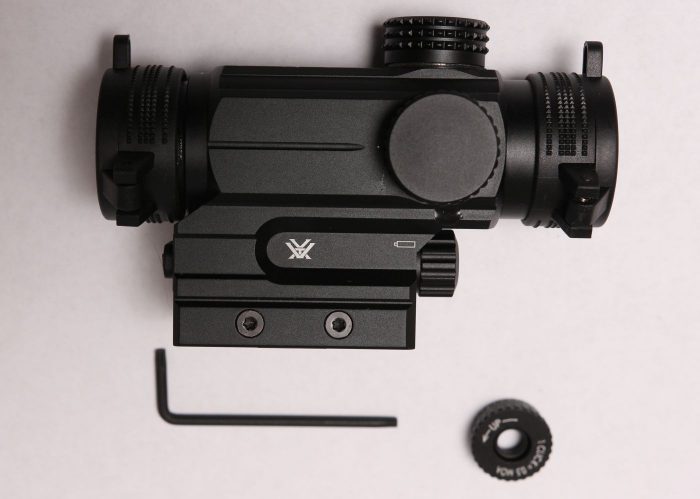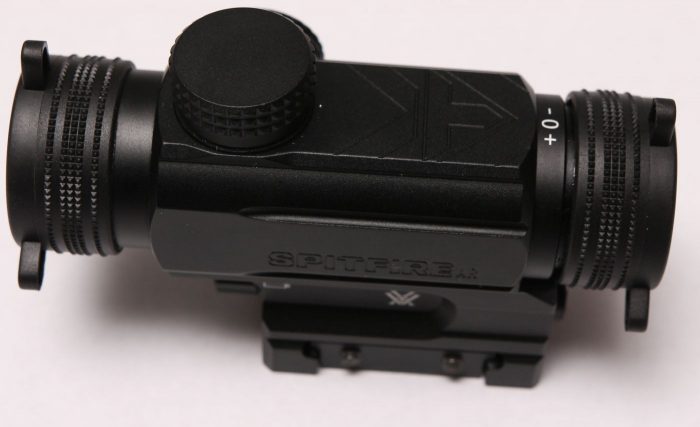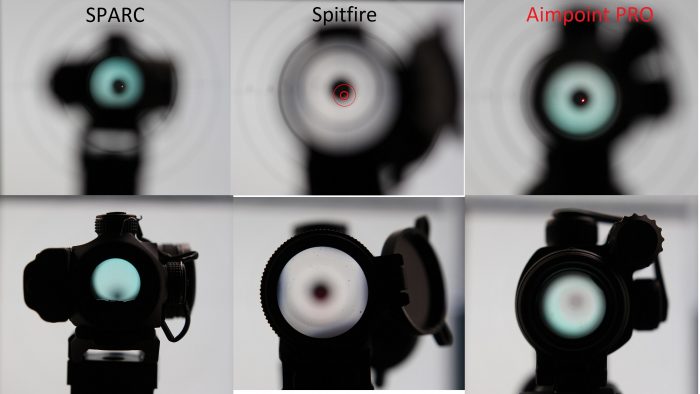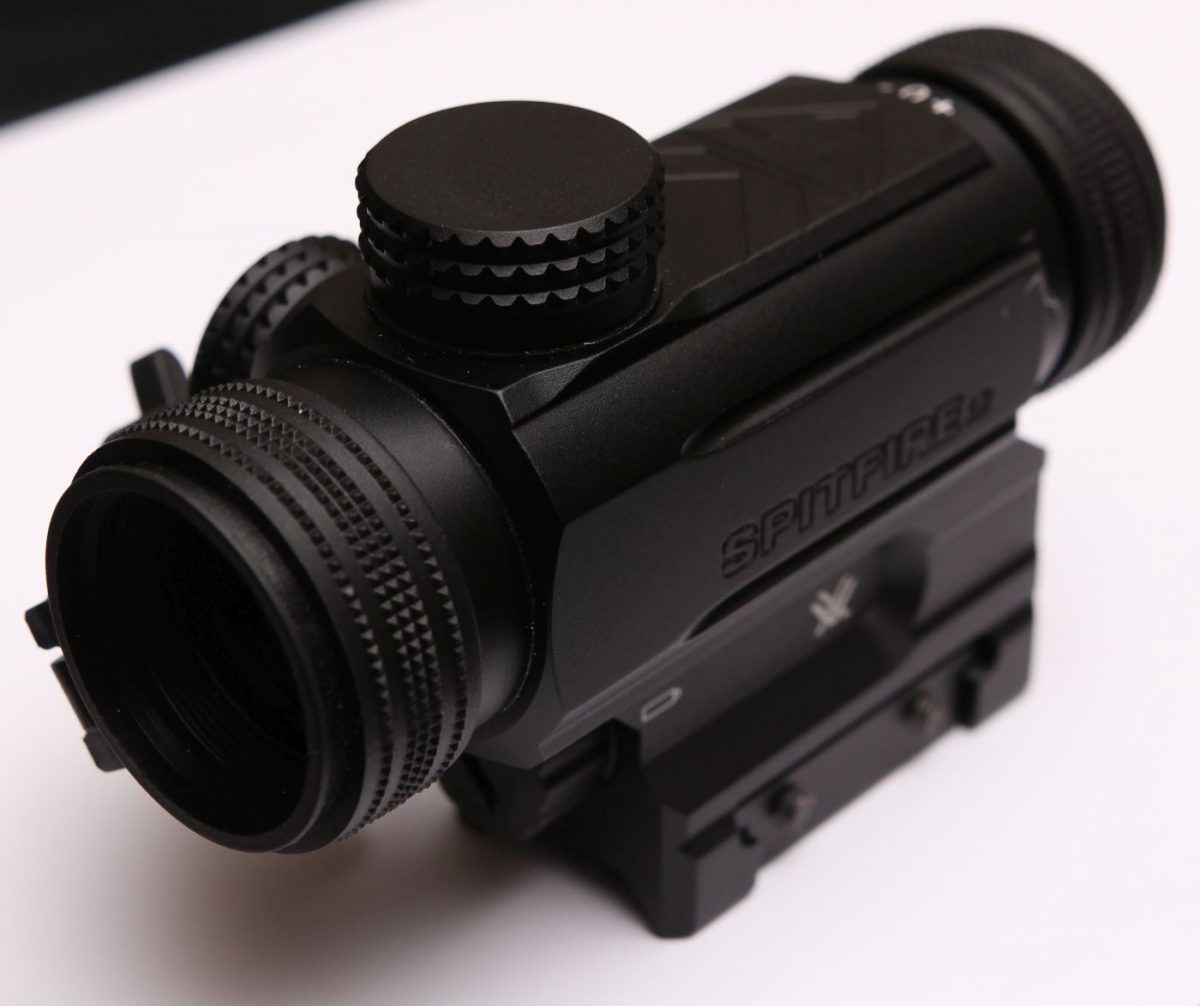The Vortex Spitfire AR is a 1X prism scope made in China. Compared with a plain red dot, a prism scope like the Spitfire works better for people with astigmatism, has an etched reticle that doesn’t require batteries, and has less of a tunnel vision than a red dot does. It also has adjustable turrets for quickly adjusting it on the fly.
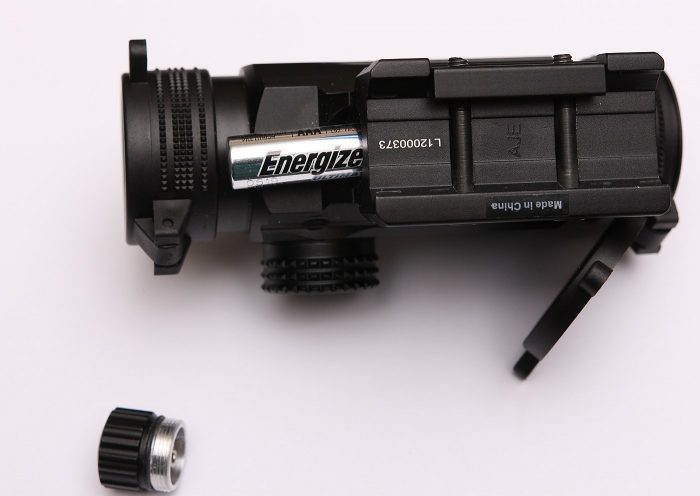
Note: Vortex has released the Spitfire Gen II HD 3X and 5X if you want some magnification.
Vortex Spitfire AR Features
The Spitfire AR differs from the regular Spitfire in that it mounts the battery in the riser, and the riser mount cannot be removed. It also uses different scope caps/turrets and has buttons for the illumination rather than a big dial.
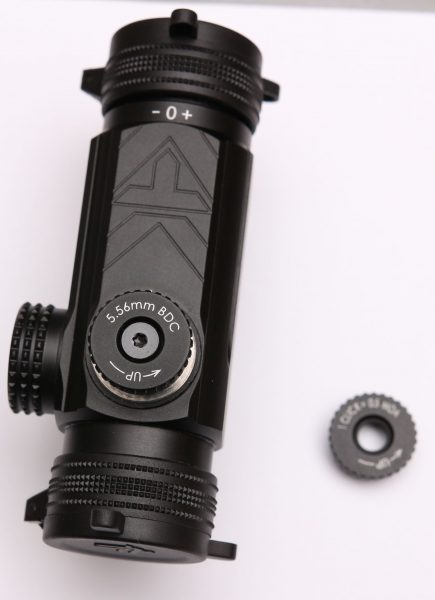
- Uses common AAA batteries for the illuminated reticle feature
- Red or green illumination with 12 levels of brightness including 2 for use with night vision
- 250 – 3000 hours of life depending on brightness setting
- Illumination auto-shutoff ensures you won’t accidentally kill your batteries
- Lower 1/3 co-witness mount height
- Comes with a BDC scope cap for 5.56 and an MOA scope cap
- 1/2 MOA clicks
- Diopter focus at the rear
- Attached flip-up scope caps (or flip sideways)
- Max elevation/windage adjustment: 120 MOA
- Eye relief: 3.8 inches
- Weight with mount and battery: 317 grams
The best red dot for 3 gun limited division?
For use in 3 gun limited/factory division, where you must use iron sights or a 1X optic on your rifle, the Vortex Spitfire is very well suited.
You can quickly dial for long range shots using the turret. Most red dots are not built for quick dialing and you just kinda fudge the hold over. With the Spitfire, you can quickly dial in the elevation.
The optic works even if your batteries are dead. Because it has an etched reticle, you don’t need to light it up.
There’s more to look at: prism scopes get the field of view right to the edge of the eyepiece and obscure much less than a red dot does. You’ll be less likely to forget a target because you couldn’t see it.
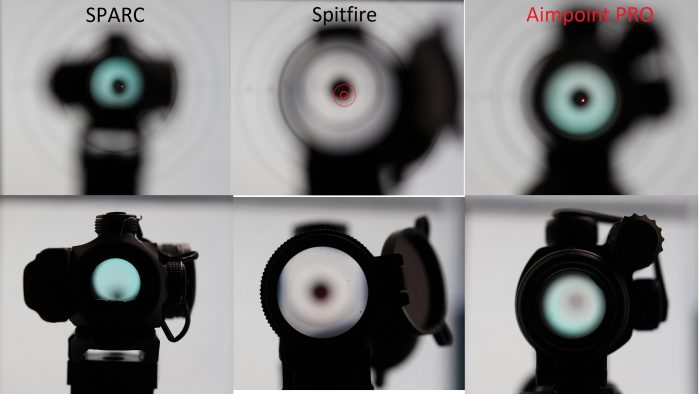
On the downsides, a prism scope requires good, consistent cheek weld. If you shoot 3 gun from different positions: under cars, or in weird angles, it can be hard to get a perfect cheek weld and perfect alignment with the optic.
Spitfire AR for hunting?
There are a couple pros that would be specific to hunting. No batteries required is nice if you hunt where the cold hurts your face and kills batteries for sport. Most red dots have a slight or heavy blue-green tint to them so the dot shows up, and that might make it a bit tougher to see through the sight at dusk or dawn. Realistically, this would be for close range only, maybe if you use your AR or similar platform for hunting coyotes.
Conclusion
There are very few 1X prism sights out there. This sight might compete with the Burris AR-1X, Primary Arms SLx “Cyclops” 1X. . .and that’s about it? If you want some magnification, Vortex, Primary Arms, Sig Sauer, and Burris all sell compact prism scopes in 3x and 5x, and if you want to get a bomb-proof fixed mag, compact reflex sight, there’s always the Trijicon ACOG line.
